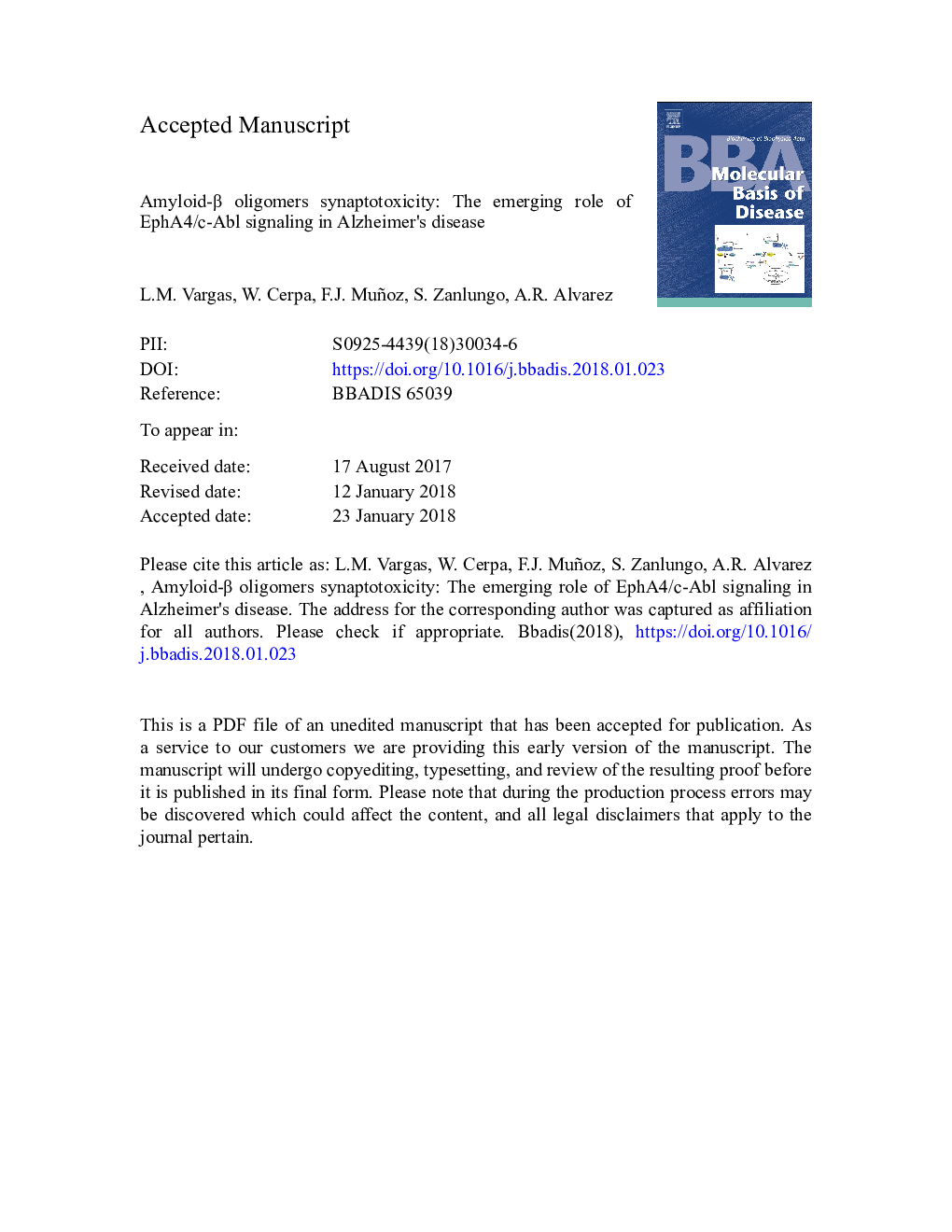| کد مقاله | کد نشریه | سال انتشار | مقاله انگلیسی | نسخه تمام متن |
|---|---|---|---|---|
| 8258557 | 1534610 | 2018 | 42 صفحه PDF | دانلود رایگان |
عنوان انگلیسی مقاله ISI
Amyloid-β oligomers synaptotoxicity: The emerging role of EphA4/c-Abl signaling in Alzheimer's disease
دانلود مقاله + سفارش ترجمه
دانلود مقاله ISI انگلیسی
رایگان برای ایرانیان
کلمات کلیدی
موضوعات مرتبط
علوم زیستی و بیوفناوری
بیوشیمی، ژنتیک و زیست شناسی مولکولی
سالمندی
پیش نمایش صفحه اول مقاله

چکیده انگلیسی
Alzheimer's disease (AD) is characterized by progressive memory loss and dementia. The strong correlation between cognitive decline and the loss of synapses supports the idea that synaptic damage is a relevant pathogenic mechanism underlying AD progression. It has been shown that amyloid beta oligomers (AβOs) induce synaptotoxicity ultimately leading to the reduction of dendritic spine density, which underlies cognitive damage. However, the signaling pathways connecting AβOs to synaptic dysfunction have not been completely elucidated. In this review, we have gathered evidence on AβOs receptors and the signaling pathways involved in synaptic damage. We make special emphasis on a new AβOs induced axis that involves the tyrosine kinase ephrin receptor A4 (EphA4) and c-Abl tyrosine kinase activation. EphA4 is a key player in homeostatic plasticity, mediating dendritic spine remodeling and retraction. AβOs aberrantly activate EphA4 leading to dendritic spine elimination. c-Abl is activated in AβOs exposed neurons and in AD patient's brain, and the inhibition of activated c-Abl ameliorates cognitive deficits in AD mouse model. The EphA4 receptor activates c-Abl intracellular signaling. Therefore EphA4 is an emerging AβOs receptor and the activation of the EphA4/c-Abl axis would explain the synaptic spine alterations found in AD.
ناشر
Database: Elsevier - ScienceDirect (ساینس دایرکت)
Journal: Biochimica et Biophysica Acta (BBA) - Molecular Basis of Disease - Volume 1864, Issue 4, Part A, April 2018, Pages 1148-1159
Journal: Biochimica et Biophysica Acta (BBA) - Molecular Basis of Disease - Volume 1864, Issue 4, Part A, April 2018, Pages 1148-1159
نویسندگان
Vargas L.M., Cerpa W., Muñoz F.J., Zanlungo S., A.R. Alvarez,